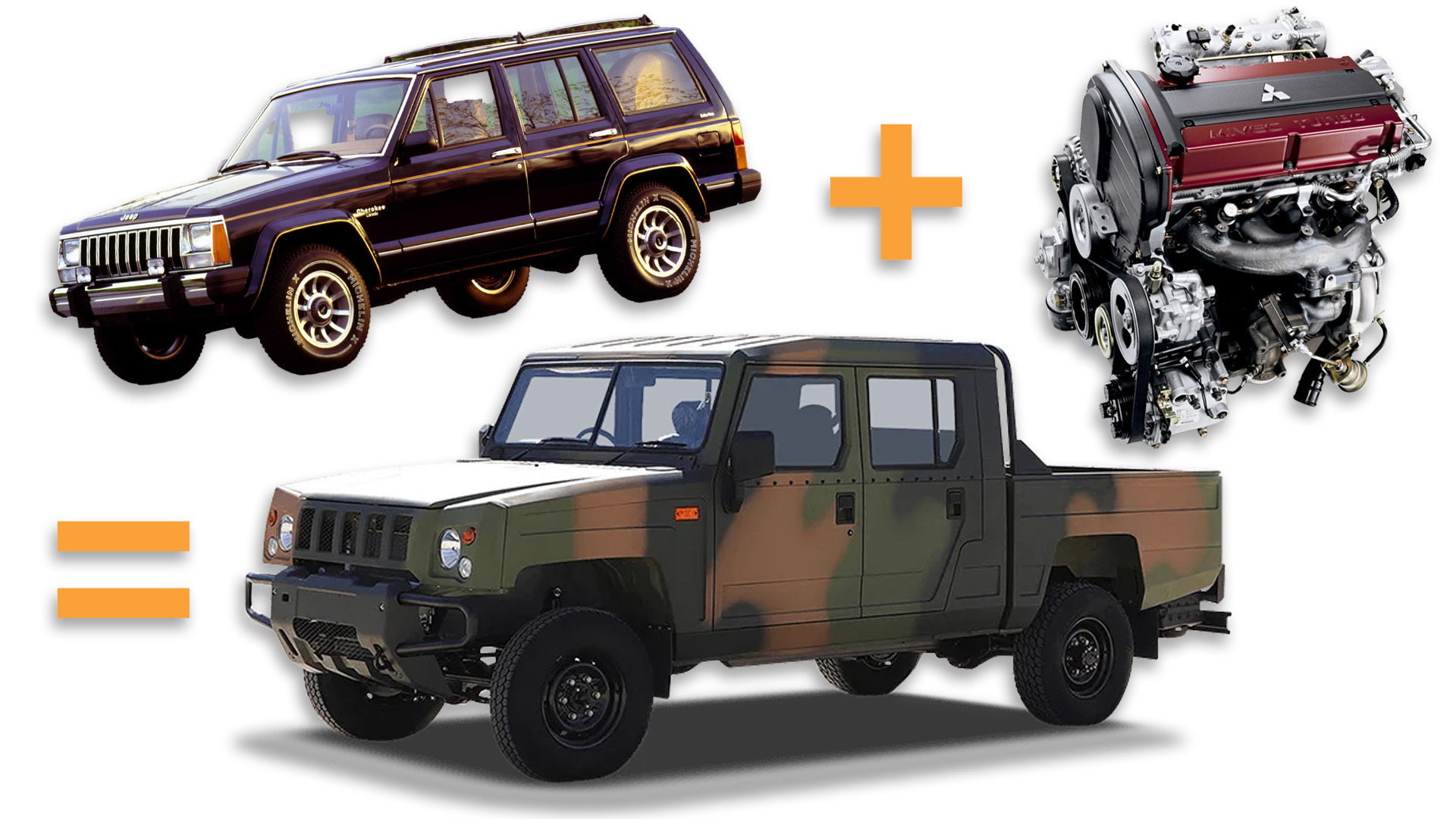

China’s car industry is a mix of copying, Frankenstein engineering, and originality that boggles the mind. They build everything from a chibi Toyota Tundra with an Isuzu engine to a fake C1 Chevy Corvette that’s also a plug-in hybrid. It may come as no surprise, then, that China is still building a derivative of the Jeep Cherokee (XJ) as a military vehicle. But what you wouldn’t expect is that it’s powered by one of the greatest tuner engines ever, the Mitsubishi 4G63T. And as you’d expect, its origin story is a rollercoaster ride.
Telling it requires turning the clock all the way back to 1984, when Jeep‘s owner AMC became the first western carmaker to establish production in China. Under government-mandated joint venture Beijing Jeep, it cranked out a combo of Russian UAZ-based off-roaders and license-built XJ Cherokees for the Chinese market. When Jeep was bought by Chrysler—then in its Diamond Star Motors era—it became a cousin of Mitsubishi, which lent it the 2.4-liter 4G64, setting the stage for what’s to come.

China produced the XJ almost unchanged until the mid-2000s, before adapting it into the Jeep 2500, 2700, and later BAW Qishi, which stuck around until 2014. Around this time, Beijing Auto Works (as it was now called) was developing a new military vehicle with the help of Chrysler: the BJ2022.
When I say “new,” I use that term loosely: It was based on the XJ, but with a slightly larger body and an added inch to the wheelbase. BAW also switched its front suspension from multilink to a choice of MacPherson strut or leaf springs. As before, the rear is a leaf-sprung solid axle.

First built in 2005, the XJ-derived BJ2022 would outlast the Cherokee, and remains in production today. Like China’s Hummer H1 clone, it too spawned a civilian version, the Yongshi (or Warrior). Introduced in 2017 or so, it has been produced in a variety of body styles, from single-cab pickups to four-door SUVs, and with a variety of engines. While military models are said to use Isuzu and Nissan diesels among other motors, the civilian version is said by Chinamobil.ru to employ a series of Mitsubishi engines. And one of them is a 4G63T.
To be specific, it’s the 4G63S4T, which isn’t the same one you blew up in your old Eagle Talon. It still has an iron block, TD04 turbo, and aluminum head, but that head houses just a single camshaft. Power output slouches to 187 horsepower and 184 lb-ft of torque, but can supposedly be brought up to 300 hp easily. Throw on the DOHC head, some stronger rods and pistons, and it’ll almost certainly be ready to push more than 400 hp at the wheels.



It’s not clear how widely produced this version of the BAW Yongshi is, but these trucks don’t seem to be very hot sellers. Good Car Bad Car reports only 7,889 total sales in China from 2017 through 2020, and the 4G trucks can only make up a fraction of those.
But if you’re getting ideas for your breakout build as a YouTuber, there’s no need to learn Mandarin to navigate Chinese used car listings. It looks like you can just straight-up order one new from BAW through Made-in-China, which offers it in single- and crew-cab spec. The only transmission option is a six-speed manual, and a two-speed four-wheel-drive transfer case is standard. The cost? As little as $9,000.
Obviously, it’ll be a cold day in hell before you could ever register a BAW Yongshi with the DMV, but you could do worse when it comes to farm trucks. Or for that matter, a race truck, if you’re willing to gamble on a mutated Jeep XJ with a Mitsubishi engine. If you aren’t, someone else probably is, and they’re gonna build the ugliest goddamn sand rail you’ve ever seen. And that’s saying something.
Got a tip or question for the author? You can reach them here: james@thedrive.com